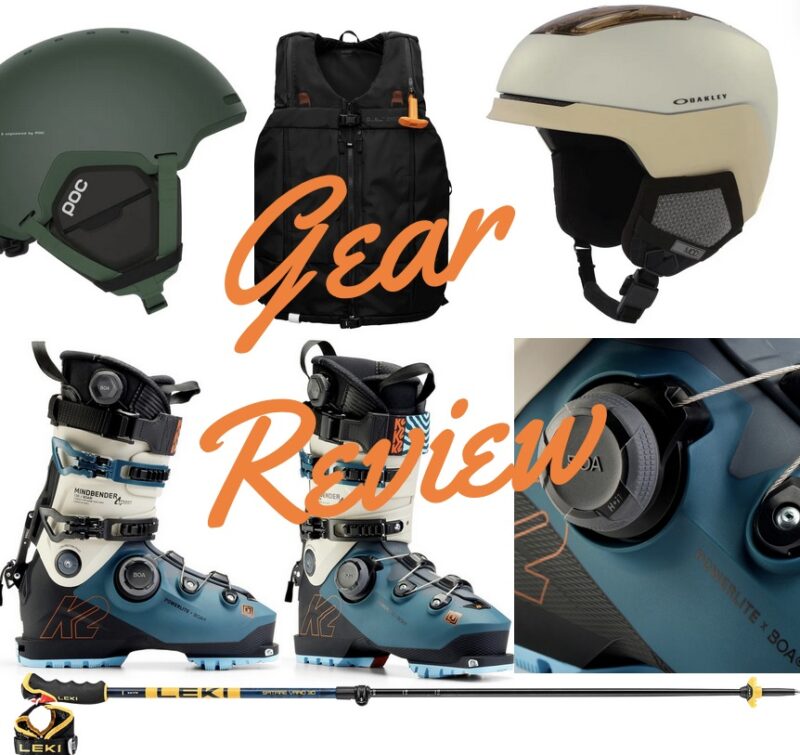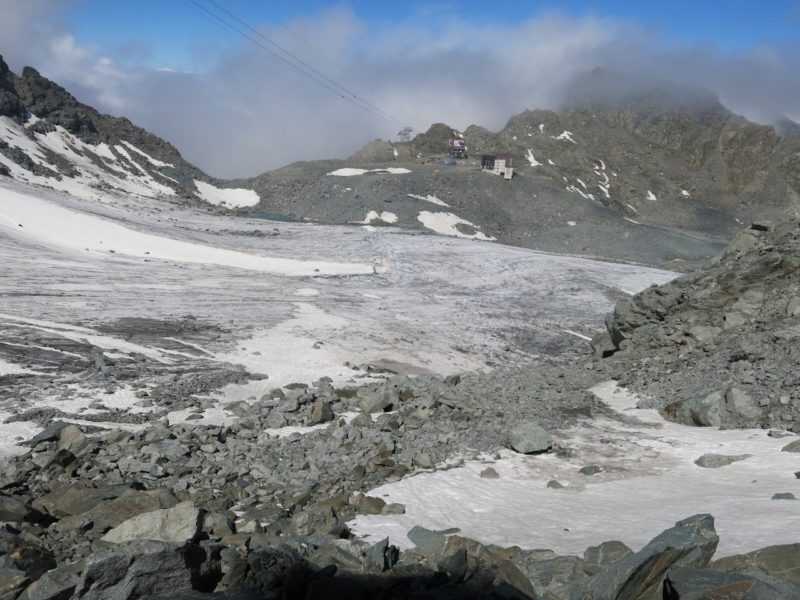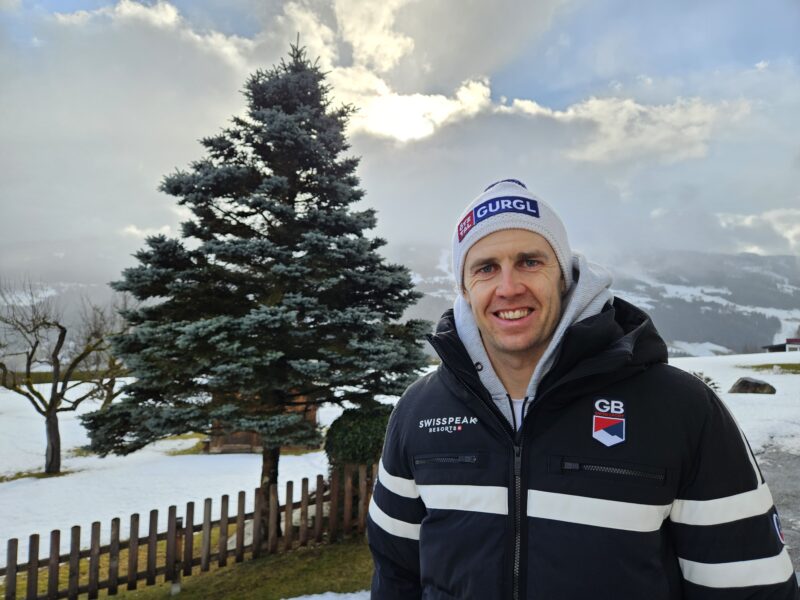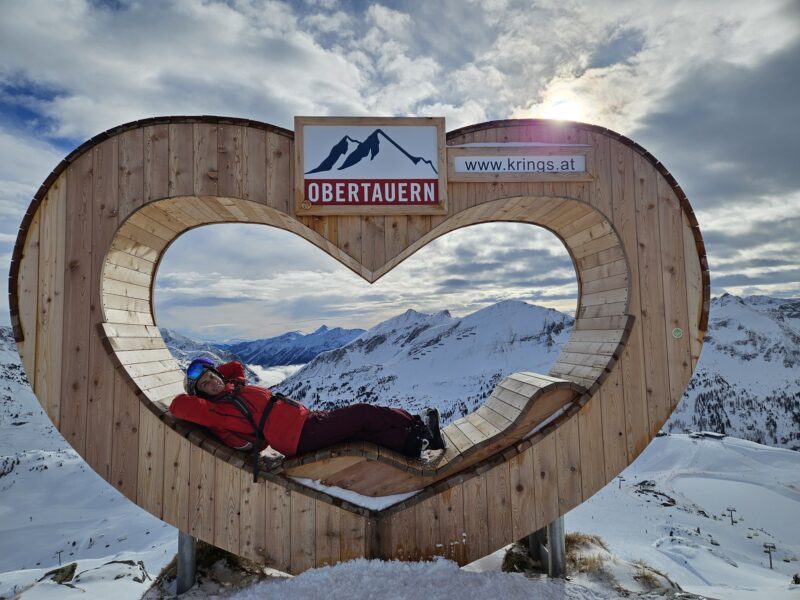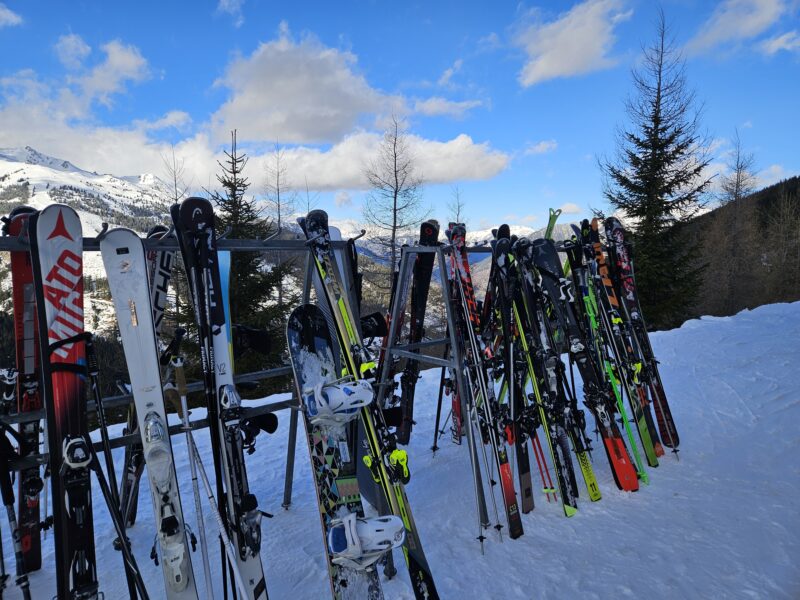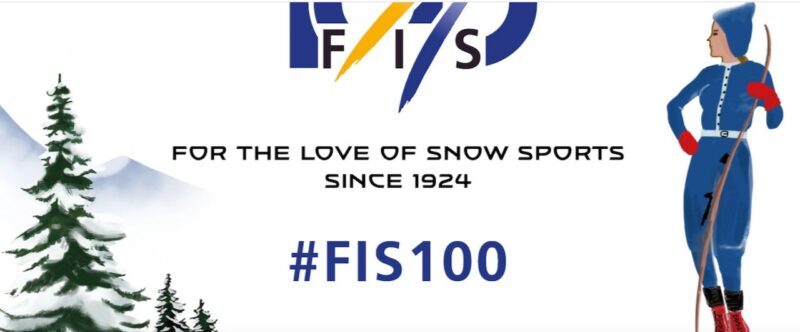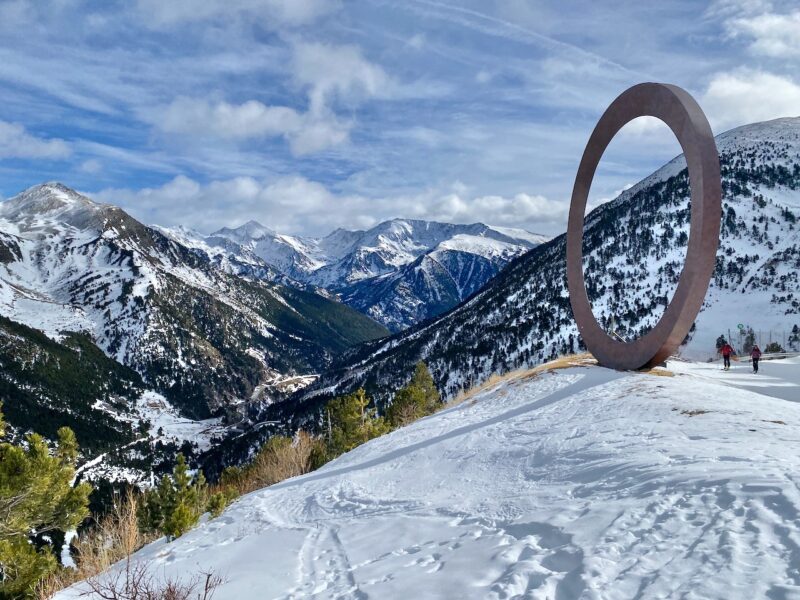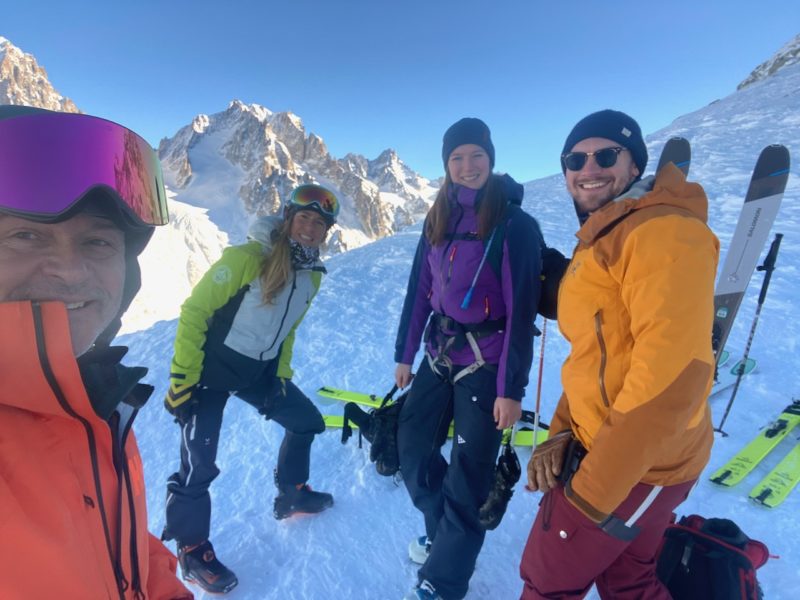PlanetSKI Gear Review #6 Winter 23/24
1st March 2024 | Alf Alderson - Gear & Equipment Editor
Last modified on March 11th, 2024
In our sixth edit of the season Alf Alderson checks out some skiing hardware including K2Mindbender 130 BOA ski boots, the Safeback SBX Avalanche system plus helmets from Oakley & POC.
LEKI SPITFIRE 3D POLES £114.95
Leki’s Spitfire 3D poles feature the company’s innovative ‘Trigger’ system, which is one of those things you never realised you needed until you actually use it.
Basically it’s a ‘click in/click out’ system by which your poles are securely attached to your wrists via a one-size wrist loop which fits over your gloves, so you can do useful things like remove your gloves and leave them attached to the poles when, for instance, answering your phone.
But much more importantly the system is also designed to release in the event of a fall.
So you don’t end up with that common skier’s injury of a dislocated thumb, or other damage to hands, fingers or wrists as a result of being caught up in the straps of your ski poles.
The Trigger 3D system works admirably well, perhaps no surprise given that it’s the result of over 2,000 hours of prototype design, 10,000-plus test releases, and endless cycles of athlete testing and feedback.
In addition, the Spitfire 3D poles come with super grippy Pro G race grips, and you get two different baskets – the ‘Cobra’ basket for piste skiing and the ‘Big Mountain’ basket for deep snow, both easily interchangeable by hand.
The poles, fabricated from aluminium, are also adjustable with gloved hands, with a range of 110 – 140cm, and whilst they’re not the lightest ski poles on the market (289g) they’re certainly some of the most versatile.
VERDICT: Innovative technology, great build quality and excellent versatility make the Leki Spitfire 3D a great option whatever kind of skier you are.

Leki Spitfire 3D ski pole £114.95 – Image © Leki
SAFEBACK SBX AVALANCHE SURVIVAL SYSTEM €599
The most recent advance in avalanche safety comes in the form of the Safeback SBX, an avalanche survival system which helps to reduce the chances of suffocation if you’re unfortunate enough to be buried in a slide (three out of four avalanche fatalities are due to suffocation).
The Safeback SBX is essentially a vest/backpack with built-in technology which continually supplies fresh air to the breathing area of an avalanche victim through the porous crystal structures within the snowpack – this extends the potential survival window by delaying suffocation for at least 90 minutes.
Activation is the same as with an ABS pack.
You pull on a T-shaped handle attached to the shoulder of the vest, which, of course, relies on the user being quick enough to realise they’ve been caught in an avalanche and pull the handle before being bundled over, as with an ABS system.
A battery powered fan system uses the air in the snowpack as the victim’s fresh air supply, continuously pumping air to the breathing area through an intake window on the vest up to the outlets on the shoulder straps.
The airflow created in the snow delivers fresh oxygen to breathe in and pushes away the CO2 that has been exhaled.
The system will run for up to 90 minutes in temperatures as low as minus 30°C, giving rescuers plenty of time to get to the victim.
Unlike other breathing systems such as the Black Diamond Avalung, no breathing tube/mouthpiece is required.
You can also use the Safeback SBX with an ABS system for the full belt and braces approach since the activation handle can be integrated with a second activation wire, meaning both the SBX and ABS system can be activated with a single pull.
So, how does it work in practice?
Well, that I can’t tell you since there’s only so many things I’m prepared to do for the mighty PlanetSKI and being buried in an avalanche is not one of them!
However, I have at least worn the system and done experimental activations of it.
In that respect it’s pretty much identical to an ABS pack – the handle is located in the same position as on an ABS pack, and provided you have the wherewithal to grab it and pull if you’re caught in a slide, it’s easy to operate.
Plus being battery-powered the system is rechargeable, so you can practice with it.
The Safeback SBX is effectively a vest as opposed to a pack – it zips up the front and has two large, zippered chest pockets, whilst the rear has a top zippered pocket and a large zippered compartment beneath, so if you’re not skiing with a pack there’s room to carry a shovel and probe, extra layer etc.
You need to wear it over your normal ski gear, so you might want to consider going for a size up to accommodate the bulk.
Initially it feels somewhat stiff and bulky, but you soon get used to this; however, if worn with an ABS pack as well, you definitely will feel that you’re carrying a lot of extra weight and bulk, the payoff being that if the worst happens, you’re as well protected as it’s possible to be.
VERDICT: A very useful, ingenious and easy-to-use addition to the armoury of protection against avalanches; however, it’s not cheap and is somewhat bulky when used in combination with an ABS pack.

SAFEBACK SBX AVALANCHE SURVIVAL SYSTEM €599 – image © Safeback

SAFEBACK SBX AVALANCHE SURVIVAL SYSTEM €599 – image © Safeback
K2 MINDBENDER 130 BOA SKI BOOTS £750
K2’s Mindbender 130 BOA ski boot aims to provide you with one boot for two jobs – downhill and ski touring – and does a pretty good job of it; but more of that later.
First off, let’s take a look at the various features of the boot.
The most noticeable thing is the BOA system – in fact you get two BOA dials built into the boots, one large on the shell and a smaller one on the outside of the inner boot.
This allows for excellent fit and feel, with the system providing a uniform, comfortable ‘wrap’ of your foot at the same time as keeping your heel securely in place.
There’s even pressure distribution thanks to the system’s ability to allow you to make micro-adjustments, and these can also be done quickly and easily whilst on the move, so it’s no problem to loosen the boots whilst on a chairlift and then tighten them again ready for skiing in a matter of seconds.
Another big advantage of the BOA system is that it means the boots can be easily adjusted to fit both low- and high-volume feet without the need for specialist fitting, this being further enhanced by the fact that both the shell and the inner boot are heat mouldable and you get an optional toe insert in the inner boot to take up volume if needed.
The boot’s uppers have a traditional two buckle fastening system, with the buckles also being micro-adjustable simply by spinning them clockwise to tighten or counterclockwise to loosen.
The Mindbender’s ‘MultiFit’ last has been developed in conjunction with the BOA system to accommodate a variety of foot shapes ranging from 97mm to 100mm out of the box (and up to 104mm with heat moulding) so most skiers are catered for.
That said, the 130 flex rating (hence the boot’s name) won’t work for everyone as it is very much on the stiff side.
But if you like to charge hard on the downhills you’ll find it appealing; this is further enhanced by the ‘Booster Cam Strap’ around the cuff of the boot which cinches up tighter than a standard power strap for better power transmission and more precise handling.
Yet more responsiveness is offered through the option of soft or rigid ‘Harshmallow’ inserts in the heel of the boots, which allow you to customize the feel and responsiveness of the boots, using the soft insert for extra damping or the rigid insert for better power transfer.
The Mindbender can be put into ‘walk’ mode by simply flipping the ‘Powerlock Spyne’ on the rear of the boot.
This gives you a 50-degree range of motion, whilst tech fittings in the toe and heel allow for compatibility with both tech and alpine DIN bindings.
If you find yourself needing to hike, removable and interchangeable ISO 23223 alpine rockered ‘Grip Walk’ soles provide as good a grip as you’re likely to get from ski boot soles along with a secure hold in standard alpine bindings.
Whilst offering a great compromise between downhill boots and touring boots the K2 Mindbenders are quite heavy (1941g for a 26.5 size boot) so committed ski tourers will probably be more likely to opt for touring specific boots, such as the Salomon MTN Summit Pro (which also uses a BOA fit system) which we reviewed last year, with a weight of 1100g.
However, if, like most of us you spend the majority of your time in-bounds with the occasional short skin or hike, the K2 Mindbenders have a lot going for them.
They pretty much feel like a pure downhill boot in use, and the ease of getting a secure, comfortable fit on both forefoot and heel plus the boots’ stiffness provides confidence whilst hooning down the steepest of terrain.
Should you find yourself committed to a multi-hour skin the additional weight is totally bearable and the design of the Mindbenders ensures a comfortable ascent, with the BOA system of the inner boot helping to prevent any rubbing or blisters thanks to its secure and positive fit.
K2 MINDBENDER 130 BOA STATS
- Weight (based on 26.5 boot size)
- Shell: 1526 g
- Liner: 415 g
- Total: 1941 g
- Flex: 130
- Binding Compatibility: Pin Bindings, GripWalk
- ROM: 50°
- Forward Lean: 10-17°
- Last width: 97-104 mm
VERDICT: An excellent option for skiers looking for the best of both worlds (downhill and touring), with one of the most user friendly and comfortable fit systems available.

K2 MINDBENDER 130 BOA SKI BOOTS £750 – image © K2

K2 MINDBENDER 130 BOA SKI BOOTS £750 – Close up of BOA system – image © K2
OAKLEY MOD5 MIPS HELMET £221
Oakley’s freshly designed MOD5 was put together with input from some of the world’s leading big mountain riders and has a unique appearance, which is most obvious on the semi-transparent top of the helmet, where you’ll find the slider for opening and closing the multiple vents, which allow for excellent airflow and temperature regulation.
It also features an internal retention system operated by a BOA dial at the rear which wraps in all directions around your head to ensure a secure and comfortable fit.
The integrated MIPS system provides additional protection in the event of a prang by reducing rotational forces caused by angled impacts.
Build quality is excellent, and the same applies to the moisture wicking, removeable, vented and washable Polartec lining.
You’re further assisted in obtaining a snug, secure fit by the magnetic Fidlock buckle chin strap, which can be operated with gloved hands.
The quality of the build of the MOD5 stands out and this along with a comfortable fit make it a great option if you don’t mind splashing out.
VERDICT: Well designed, great fit and slightly different looks make the MOD5 a great option for discerning skiers.
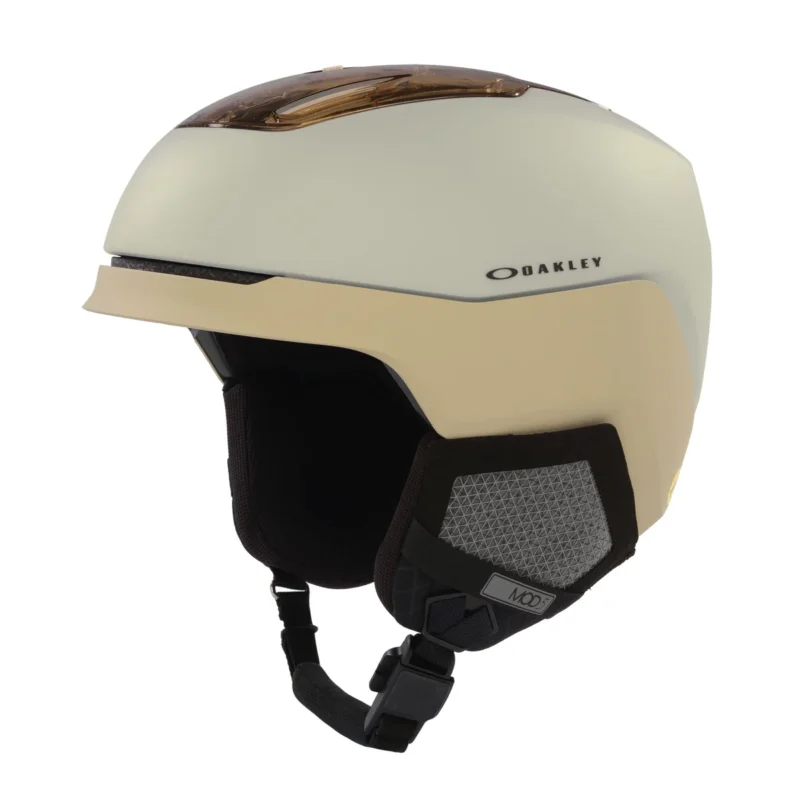
OAKLEY MOD5 MIPS HELMET £221 – image © Oakley
POC CALYX MULTI-SPORT HELMET £220
Lots of skiers also spend their summers in the hills mountain biking, cycling or mountaineering, and that’s exactly who the POC Calyx is aimed at since it’s certified for all three sports – in effect, one helmet for three sports.
The certification standards for each sport are different, so creating one helmet for skiing, cycling/mountain biking and mountaineering is not as simple as it may seem.
The Calyx features an optimized dual density EPS liner for enhanced protection, whilst the helmet’s ABS shell has exceptional strength, durability and impact resistance and features variable material thicknesses across the helmet to optimize weight and strength performance.
That said, it’s not as light as most bike and mountaineering helmets (M/L weighs 580g).
As you’d expect from POC, the Calyx comes with a MIPS system, which reduces rotational forces in the event of an angled impact, and a RECCO rescue reflector is integrated into the helmet to help rescue services quickly locate a user if lost on the mountain or caught in an avalanche.
Ventilation comes in the form of linear channels inside the helmet, inspired by POC’s road and mountain bike helmets, which allow the air to flow freely over your head, along with vent holes at the top of the helmet to help hot air escape by using a chimney effect.
The Calyx also has a three-stage integrated ventilation adjustment allowing you to fine tune the venting to your own preferences, and the liner can be removed for washing.
The helmet is held securely in place via a BOA system, whilst essential winter features like the goggle clip, foldable ear pads (for easier packing) and the neck warmer included with the Calyx can be quickly and easily removed for summer use, in warmer conditions or when skinning up.
It’s worth noting that the Calyx, as with all POC helmets, is designed to fit seamlessly with POC goggles, so you may find (as I did) that if you use it with another brand of goggles (in my case Uvex) you get a goggle gap between the top of your goggles and the front of the helmet, so it’s well worth checking that your goggles can be integrated with the Calyx.
VERDICT: A well-designed and extremely versatile ski helmet that you can readily use year-round for other activities.

POC CALYX MULTI-SPORT HELMET £220 – image © POC
More Gear Reviews for Winter 2023/24:
Gear Review #1 Winter 2023/24
Gear Review #2 Winter 2023/24
Gear Review #3 Winter 2023/24
Gear Review #4 Winter 2023/24
Gear Review #5 Winter 2023/24
